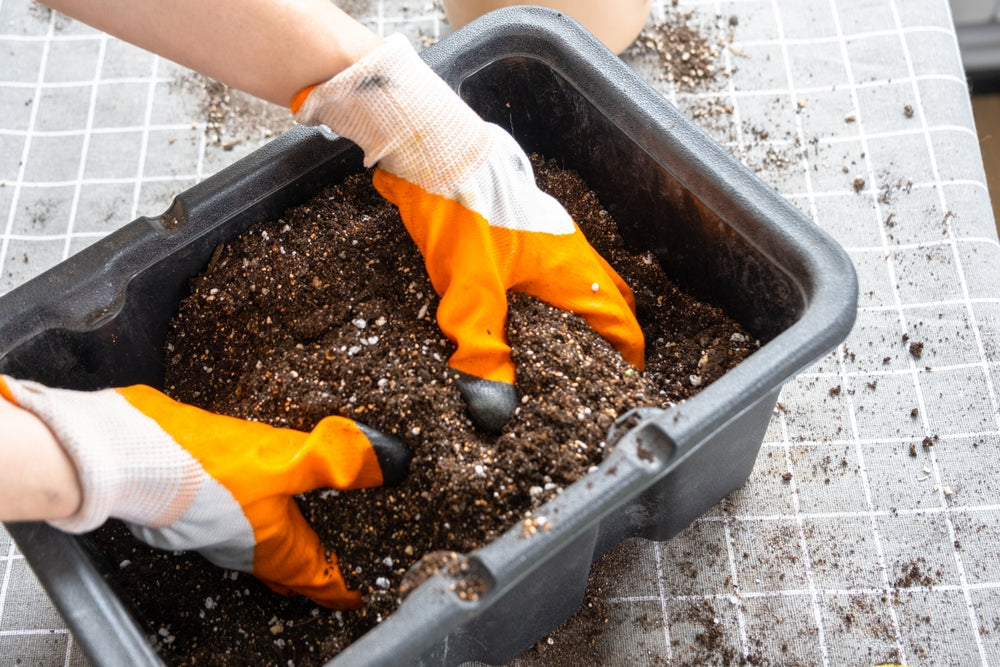
Choosing the Best Soil
Share
Ah, the simple joy of a vibrant houseplant gracing your windowsill or a balcony bursting with colorful blooms! But beneath that vibrant display lies a crucial element often overlooked: the soil. Choosing the right soil for your potted plants can be the difference between thriving greenery and a struggling, lackluster specimen.
Forget the notion of simply scooping up garden soil and calling it a day. While tempting, garden soil is often too dense for containers, hindering drainage and aeration – the very breath of life for roots. In the confined world of a pot, your plant relies entirely on you to provide the perfect growing medium.
So, what's the secret to happy, healthy potted plants? It lies in understanding the key characteristics of ideal potting soil and the common ingredients that contribute to them.
The Goldilocks of Soil: What Makes it Just Right?
Think of the ideal potting mix as having a balanced personality:
- Excellent Drainage: Excess water suffocates roots, leading to root rot. A good mix allows water to flow through easily, preventing waterlogging.
- Good Aeration: Roots need oxygen to breathe! A light and porous mix provides ample air pockets for healthy root development.
- Moisture Retention: While drainage is crucial, the soil also needs to retain enough moisture to keep your plant hydrated between waterings.
- Nutrient Availability: A quality mix provides essential nutrients to fuel your plant's growth, or at least creates a good foundation for supplemental feeding.
- Lightweight Structure: Heavy soil compacts easily in pots, restricting root growth. A lighter mix allows roots to expand freely.
- Sterility: Unlike garden soil, a good potting mix is typically sterile, meaning it's free from weed seeds, pests, and diseases that can wreak havoc on your potted companions.
The Building Blocks of a Perfect Potting Mix:
Instead of "soil," what you'll typically find in bags labeled "potting mix" is a carefully crafted blend of various ingredients, each playing a vital role:
- Peat Moss or Coco Coir: These materials act as the base of many mixes. They excel at retaining moisture while also providing good aeration. Coco coir is often seen as a more sustainable alternative to peat moss.
- Perlite: These small, white, volcanic glass particles look like Styrofoam and are fantastic for improving drainage and aeration. They create air pockets within the mix.
- Vermiculite: These heat-expanded mineral flakes also help with aeration and drainage but have the added benefit of retaining some moisture and nutrients.
- Compost: This decomposed organic matter is a fantastic source of nutrients and beneficial microbes, enriching the soil and promoting healthy growth.
- Pine Bark Fines: Small pieces of bark improve drainage and aeration while also adding some organic matter.
- Sand (Coarse): Horticultural sand (not the fine beach sand) can be added to improve drainage in heavier mixes.
Decoding the Bag: What to Look For:
When you're at the garden center, don't just grab the cheapest bag. Take a moment to read the label. Look for a mix that is specifically formulated for containers. Avoid anything labeled "topsoil" or "garden soil."
You might also encounter mixes tailored to specific plant types, such as:
- Cactus and Succulent Mix: These mixes are typically very well-draining, with a higher proportion of sand or perlite.
- Orchid Mix: Often containing bark chunks, these mixes prioritize excellent aeration and drainage for epiphytic orchids.
- African Violet Mix: These tend to be lighter and more airy to suit their delicate root systems.
The DIY Approach: Blending Your Own Magic:
For the more adventurous plant parent, creating your own potting mix can be a rewarding experience. A basic all-purpose recipe might include:
- 1 part peat moss or coco coir
- 1 part perlite
- 1 part compost
You can adjust the ratios based on the specific needs of your plants. For example, for plants that prefer drier conditions, you might increase the amount of perlite or add some coarse sand.
The Bottom Line: Happy Roots, Happy Plants
Choosing the right soil for your potted plants is an investment in their long-term health and vibrancy. By understanding the essential qualities of a good potting mix and the roles of its various components, you can create the perfect foundation for your green companions to thrive. So, ditch the dense garden soil, embrace the airy magic of a well-crafted potting mix, and watch your potted plants flourish!
#WicRgrown
